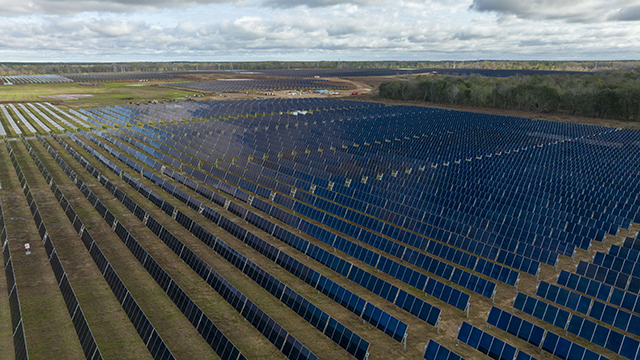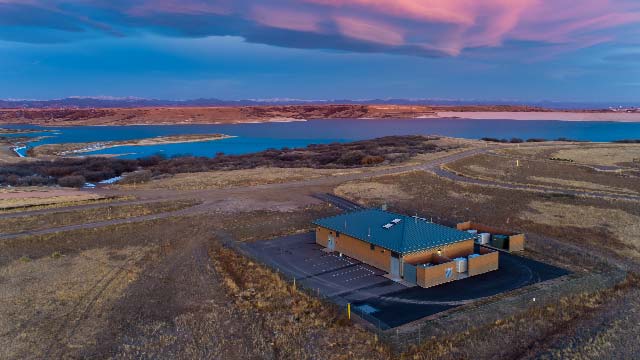By Andrew Chastain-Howley, Director of Water Solutions
Few appreciate the cost of water like commercial facilities and industrial manufacturers. Many of them are selling a product that requires water as part of the larger infrastructure setup that ultimately results in consumer goods. Take for instance food and beverage makers, for whom water is the good. Or paper and pulp companies, whose dry products rely almost exclusively on water.
Or chemical makers, or pharmaceuticals. Regardless of industry or product, the effective use of water carries huge weight for plant operators and other decision-makers who must pit emerging social calls for sustainability against the money on hand to make it happen.
Put another way, with apologies to the food and beverage industry: Is the juice worth the squeeze? The answer to that question is critical for an industry that relies so heavily on water, and for a world facing rising challenges around water scarcity, safety issues and resilience
The World Bank values the world’s food and agricultural industry at approximately $5 trillion, and this is directly connected to the health of the water supply. That supply is at risk.
In a 2017 report on how major food and beverage makers address water risk, the sustainability-focused nonprofit Ceres found good and bad: Water-risk-management scores rose by an average of 10 percent since the group’s 2015 report, noting that business strategy and corporate governance were increasingly accounting for water management.
However, the group’s report also found that meat and agricultural products continue to lag behind food and beverages, with 85 percent of companies noting in their financial filings that water was a “material risk.” More than $450 billion was at risk because of water scarcity, with another roughly $200 billion challenged by crop production issues tied to climate change.
For many manufacturing facilities, water already has a significant footprint in their infrastructure or physical plant behind whatever product they make. Energy has this issue, too. Growing and sourcing ingredients, shipping them cross-country, and using huge amounts of process heat and cooling all requires equally huge amounts of power, fuel and water. Then there’s lighting, refrigeration and HVAC, to name other factors.
Large companies are beginning to more fully understand the value of strategizing water in the same way, and there are signs that data and predictive analytics may someday be just as important to sustainability as mitigating infrastructure failures or condition-based maintenance.
Leveraging the Internet of Things and Big Data
Warehouse retailer Costco recently initiated a program leveraging the Internet of Things (IoT) to holistically understand the company’s water consumption and ultimately reduce its wasted water and cut costs. Elsewhere across the water spectrum, the move into the era of Big Data and IoT deployments sees water and wastewater treatment plant operators deploying advanced sensors that can pick up previously undetectable changes in infrastructure performance.
These technologies, and the associated predictive analytics will help companies anticipate equipment issues and failures, as well as build a roadmap to improved maintenance and performance-based equipment replacement. It’s not a giant leap to envision how the water and wastewater treatment sector’s application of data and data analytics could be applied to the C&I space.
Black & Veatch recently polled hundreds of professionals in the commercial and industrial sector to identify emerging trends in resource use with a particular focus on sustainability, capital spending and energy and water management trends within their organizations. Our 2019 Strategic Directions: Commercial & Industrial Report survey polled representatives from across various C&I sectors and business sizes. Seventy-five percent of organizations with 5,000 or more employees said that water and energy consumption are factors in their sustainability goals. More than half of companies with 2,000-4,999 employees agreed, though the numbers predictably fall with smaller organizations, perhaps reflecting concerns over upfront investments needed to more effectively address energy and water resource management.

Like their counterparts in the utility space, commercial, industrial and manufacturing companies have a consistent focus on operations. Margins will always be scrutinized, and globally, many aging manufacturing facilities are using equipment well past its anticipated lifespan. Budget constraints or upfront costs were the leading concern among respondents to the Black & Veatch survey, with regulatory compliance issues close behind. How sustainability is prioritized at the corporate level is also under question, some respondents indicated.
While complete equipment replacement may be necessary for the oldest facilities, frequently, the answer to improved water resource management can be found not in total replacement, but in a combination of hardware and software. Smart technologies are proving valuable in helping water and wastewater facility engineers improve their process control, water quality, monitoring and reporting.
Smart Technologies for More Sustainable Operations
Industrial water plant managers are looking to deploy advanced sensors that can pick up previously undetectable changes in infrastructure performance. These technologies in tandem with predictive analytics will help industrial water facilities anticipate equipment issues and failures, as well as build a roadmap to improved maintenance and programmatic equipment replacement.
Recently a major industrial client approached Black & Veatch with a vexing challenge, asking us to monitor their mechanical infrastructure and water and wastewater systems. Power systems and feedwater were the initial concerns, but as the system analytics were developed it became obvious that the system could manage some of the industrial processes too. Data is consistent in these circumstances and as long as there is subject matter expertise to develop the initial calculations and understand the workflow, these software platforms can be utilized across the industry from the water supply to the wastewater effluent discharge and almost everything in-between.
The use of advanced data analytics also moves these operations from a reactive to a proactive stance, helping managers develop new opportunities for operational intelligence, risk management and improving levels of service. Optimizing resource management through data requires understanding the water in your system.
So much of industrial water infrastructure is interrelated, from cooling and pumping to wastewater management, a holistic understanding of water’s connectivity is crucial to effectively managing water’s cost on the balance sheet. Data analytics, properly aggregated and visualized to give operators actionable insights to inform better decision making, can put facilities on a path to sustainability and resilience.
These advantages combine to make a business case for data collection overlaid by smart, easily accessible software. Can you afford having it? Good question.
Can you afford not to have it? That’s an even better question.
About the Author
Andrew Chastain-Howley is a Director of Water Solutions for Atonix Digital, a Black & Veatch software subsidiary. He specializes in water and wastewater systems and is based in Dallas, Texas. He has 28 years of experience across four continents.








